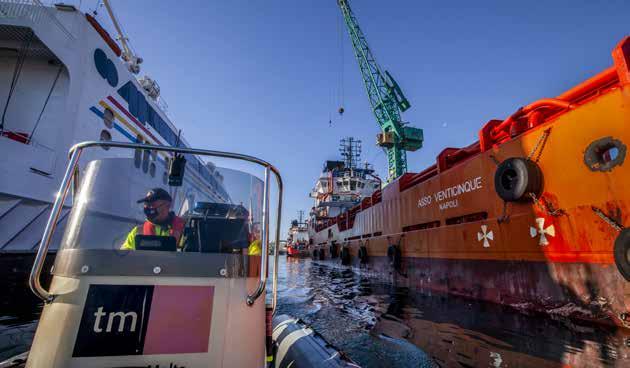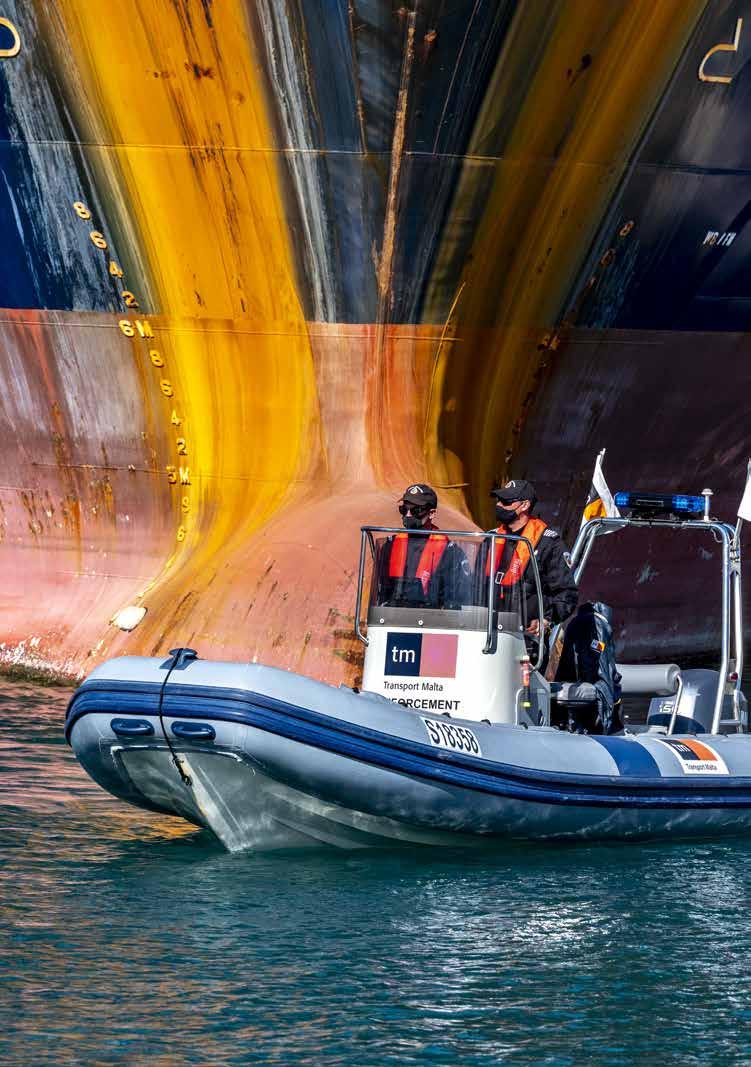
4 minute read
Looking at the PostPandemic Years with Optimism, Continued Investment, and Renewal
KEVIN FARRUGIA Chief Operating Officer and Deputy Chief Executive Officer, Transport Malta
Welcome to the second edition of our official quarterly journal, T-21. The publication of this second edition is parallel with the presentation and publication of our Annual Report for 2020, which in a way mirrors what the whole country has been experiencing over the last 12 months or so. The current COVID-19 pandemic made everyone, including Transport Malta, adapt to a new and unprecedented way of life which we are constrained to living in, at least until the pandemic subsides and we return to some form of normality.
Advertisement
The COVID-19 Pandemic has brought to the Authority new challenges unlike ever experienced before. Transport operations and activities subsided across all transport modes, and as this slowing down is expected to continue at least for the first few months of this year. Transport Malta was also called upon to assist the Public Health Authorities in the enforcement of the latest measures put in place by the Superintendent of Public Health to curtail the spread of the COVID-19 virus.

In this respect, our enforcement officers have been deployed to give a helping hand in the endeavour to keep the public safe. In the meantime, however, the Authority is continuing to streamline its operations across all transport modes and make itself better prepared for the post pandemic era, whenever this shall happen. This slowing down and the fact that people are travelling less (at a local level) could be clearly seen by the data collected throughout 2020. A good indicator is the fact that throughout 2020, the number of contraventions issued by our Land Enforcement Department totalled to 15,287, when compared to the 16,512 issued in 2019. Similarly, for example, the number of vehicles towed in 2020 was that of 121, while those clamped amounted to 192. Comparatively, in 2019, 350 were towed and 547 were clamped. Whether this was a result of the slowdown in transport services because of the decrease in travelling or whether it is because people are being more careful in the way they use their vehicles, will have to be seen once the pandemic is over. We hope that the decrease in the number of contraventions given is because people are being more careful on the road. In the meantime, like many other public organisations and private companies, the Authority is continuing in its endeavour to continue renewing its operations with new work practices, such as teleworking for members of our staff who could easily work from home, as well as by making more investments to improve and upgrade our resources and general assets. Continuing in the development and investment of our GIS Platform is one such example, and so is the long-term training and retraining of our staff.
In the first edition of the T-21 Publication we provided you with a window to our day-to-day operations of our Enforcement Directorate, which includes, among other responsibilities, the enforcement of traffic and maritime regulations as well as physical on-site traffic management at crucial road junctions and bottlenecks. In this edition however, we are giving the general public an insight on the work currently being carried out by the Authority on our GIS System. This is a very important tool in the provision of real-time information for road users, as well as in managing our assets and transport

infrastructure better, which will complement and improve the output of the Authority for the benefit of all road users alike. These investments and works will be coupled with additional investments in our Traffic Control Centre, which will make full use of our expanding GIS System to continue improving traffic flows and traffic management. We will take a closer look at the work of our Traffic Control Centre in this publication, later on this year. The building of our GIS platform will not happen overnight, especially since our infrastructure keeps on evolving and developing, as our assets continue to increase, as technology keeps advancing, as new Intelligent Transport Systems keep developing, and as new transport services are introduced. Our GIS system will continue to develop.
Each system and each transport service with its respective infrastructure will need to be made to be layered into the GIS ecosystem in order to have the whole jigsaw puzzle in place. Similarly, we need to come to a situation where road closures and road works would also be mapped in the system, correctly and in good time, so that road users would be notified about them in real time. This would need the full cooperation of contractors, local councils, and other entities, which in some shape or form carry out activities on our streets. This is not an easy task, especially since the information required would need to be correct and timely. The GIS architecture will eventually see the infusion of local intelligence (at source) with Artificial Intelligence. It will be the basis and the architecture needed to achieve what is referred to as “The Smart City Concept”. It is a slow but a very interesting process which will take us to the next level.










